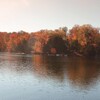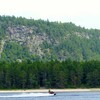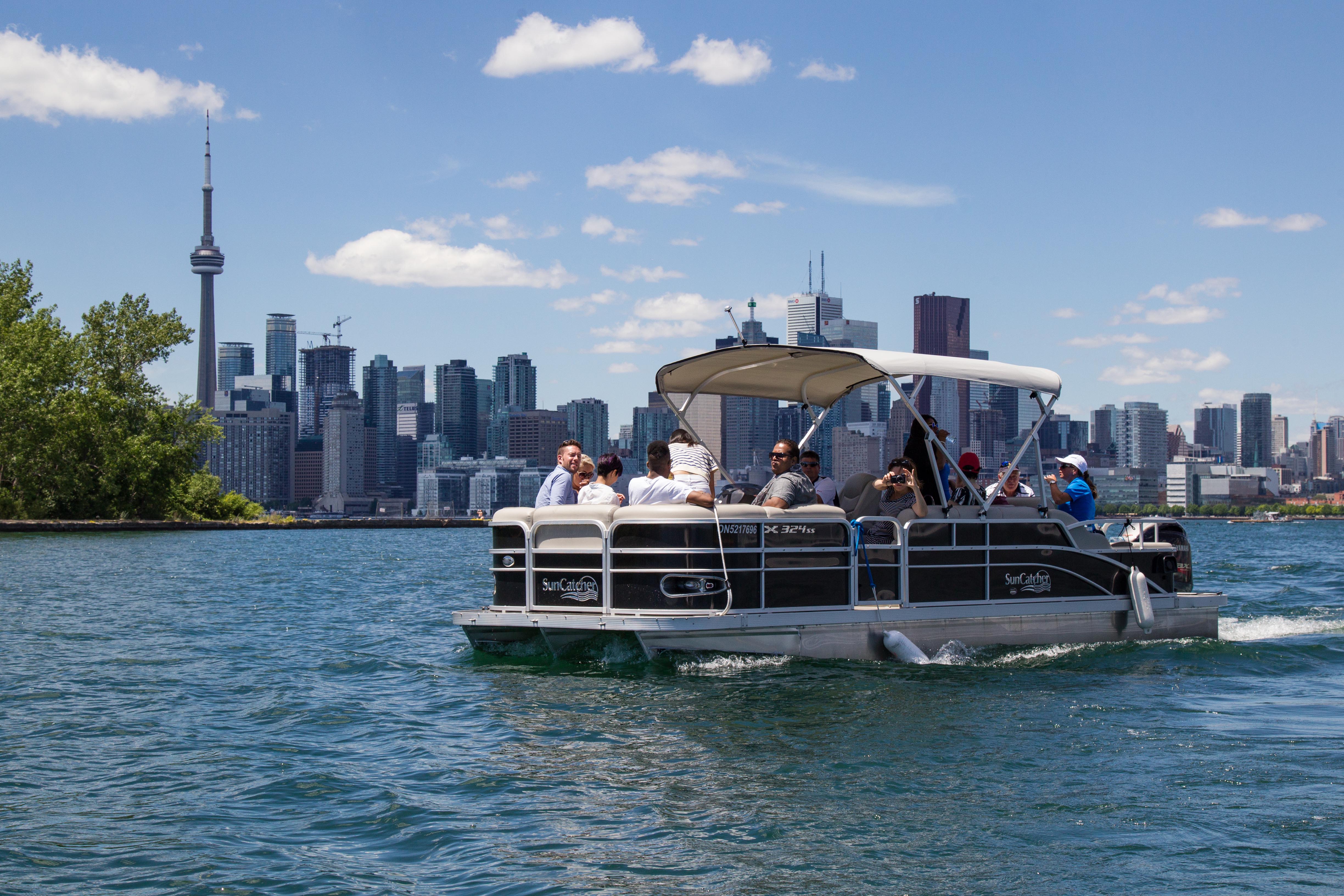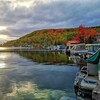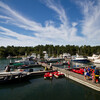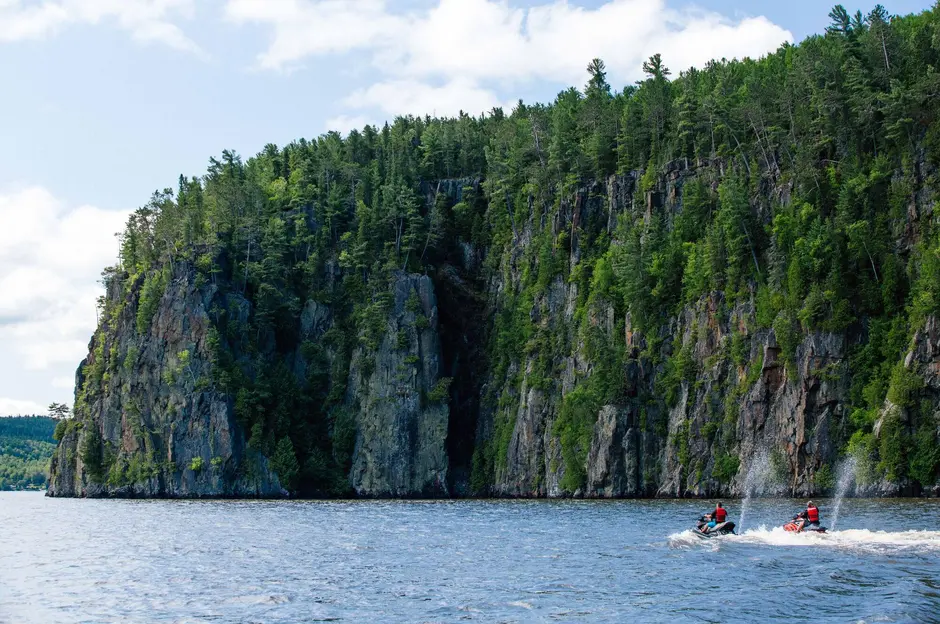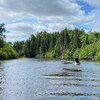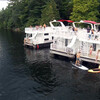
High Water on the Great Lakes: What Does It Mean for Your Boating Season?

There were a few weeks at the end of April where it seemed like it rained without pause. When we did our piece on early season boating during the last week, we were surprised by such a clear day. Sunshine has felt like a rare commodity this spring.

Here in Southern Ontario, I think it also rained every single day for the first week of May. It wasn't a light sprinkle, either. It was heavy rain. Water pooled in the fields and parks. It poured over rock cuts along the highway; rivers and streams everywhere overflowed their banks.
It was an incredible amount of water. And that water has to go somewhere. The U.S. Army Corps of Engineers have estimated 57 trillion litres (15 trillion gallons) of that water will end up in the Great Lakes. That’s enough freshwater to fill over 22,000 Olympic swimming pools. A tremendous amount of water, but still a mere drop in the bucket that is the Great Lakes.

The five bodies that make up the chain of Great Lakes hold approximately 22,810 cubic kilometres (5,472 cubic miles) of water; 20% of the world's freshwater supply. The estimated 57 trillion litres of water expected to flood the Great Lakes this spring will increase the total content of the Great Lakes by 0.0025%.
A quarter of a percent doesn’t seem like it would make much of an impact. It's like pouring a bottle of water into a full bathtub, but the Corps of Engineers expects the actual surface level of the lakes to be noticeably higher this year.
Lake-by-Lake Breakdown

- Lake Ontario is predicted to peak 17 inches higher than last year and will hit that point about the time this article is published. No doubt due to the immense amount of rain we’ve had in Southern Ontario.
- The much shallower Lake Erie will rise four inches.
- Lake Superior, the northernmost and largest of the Great Lakes, should peak by August. The level should rise a foot over last year’s highest mark.
- The connected waters of Michigan and Huron are the lakes that interest me the most as a boating enthusiast. They’re home to two of the most spectacular freshwater boating destinations in the world, the North Channel and the 30,000 Islands. Georgian Bay, an estuary of Lake Huron, is also home to the world's longest freshwater beach.

Will the rising water levels make a difference for these and other popular Ontario boating destinations this coming season?
They already have. Such a massive influx of water over a short period of time has caused water levels in the Trent-Severn Waterway and Rideau Canal to reach dangerous levels. In the interest of safety, Parks Canada is pushing back the start of the navigation season.
I’m sure this decision was not taken lightly, considering the expected increased boat traffic along these systems this year. Parks Canada waived lockage fees in celebration of Canada's 150th birthday for those boaters that ordered a 2017 Discovery Pass.
In a statement released on their website, they're warning boaters to avoid "...all forms of water-based activities..." until May 26, when they expect to have both systems open for transit.
THE GOOD NEWS
Despite this minor delay, the overall higher water levels may help to do something quite valuable in the long run.
Recent years have seen the water levels in the Great Lakes falling steadily. Among unfounded rumours of irrigation projects for drought-stricken areas siphoning off fresh water from the basin and silly ideas to export tankers of fresh water to Asia, public fears about long-term economic and environmental consequences of low water levels have gripped the eight states and two provinces that depend on this unique waterway as a $5.25 trillion economic engine.
The ferry M/S Chi-Cheemaun, which crosses the waters of Lake Huron between Tobermory, ON and the world famous Manitoulin Island, is an icon on the Great Lakes. It also presented one of the most striking signs of the low water problem for visiting boaters and sportsmen in early 2013.

That year, the crew had to postpone the start of their season because the water levels in Lake Huron were too low for the ship to berth at the ferry dock in Tobermory, ON. The ferry company had been monitoring the situation for years, noting the decrease in water levels. Unable to obtain funding to modify the docks, the Chi-Cheemaun had no choice but to wait for the water to rise.
Having spent the 2012 season on board this ferry as a navigation cadet, I have come to realize the importance of tourism dollars to this entire region. Sinking water levels are cause for great concern.
As boaters, we’ve all experienced the frustrations of low water levels, and not just on the Great Lakes. All bodies of water change over time. Showing up at a favourite boating destination, only to find the water level so low it makes launching our boats a challenge, is a situation we’ve all encountered.
Despite this minor setback of a delayed season opening, reports indicating the water levels have been trending upwards, and are about to jump significantly this season, are a boon to boaters and the tourism industry as a whole.
These high water levels don’t mean we can throw away our charts or ignore the shoals and shallow water warnings. But it does mean that 2017 should shape up to be one of the best seasons for Great Lakes boating in recent years.
Recommended Articles

6 Ways to Explore the Great Lakes by Boat or Cruise

Discover Northern Ontario's Top Boat Tours
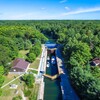
A Guide to Boating the Trent Severn Waterway in Ontario 2025

Boating Events in Ontario: A Complete Guide to Summer 2025
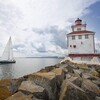
19 Charming Lighthouses to Visit in Northern Ontario
I Sailed the New Viking Octantis and Here's What It Was Like

14 PWC Itineraries and Tips for Riding in Ontario

A Thousand Adventures: Boating the 1000 Islands in Ontario

Road Tripping with your PWC
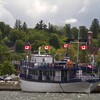
Boat Tours and Cruises in Ontario
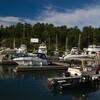
A Guide to Ontario's Marinas

5 Baller Boating Destinations in Ontario

Amazing PWC Getaway




